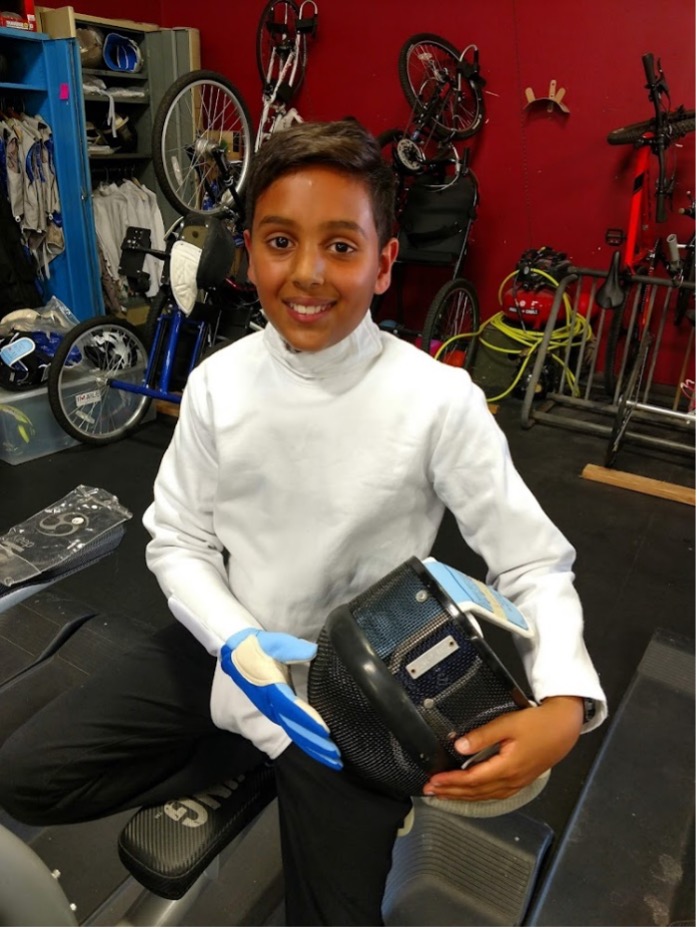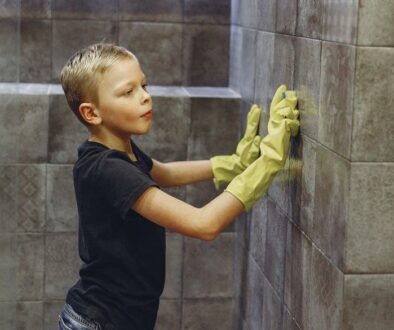Why I Love Fencing

By: Luca Mele, age 16
Fencing, fondly known as “physical chess”, is an invigorating and entertaining sport to both watch and play. It has a rich history throughout time but has developed from a method in battle to a popular sport, challenging both your mental and physical strength. I have been foil fencing since I was 10 (see picture)!
Versatility
Throughout the history of fencing, there have been different styles to originate, each used for different purposes in the face of battle. Regardless of your body type or athletic ability, a style of fencing is sure to match your flow. Foil, the most common style, involves a light blade with a blunt tip (no it doesn’t hurt!) that you use to hit your opponent’s torso to score points. Anywhere else is considered off-target and the point will not count. Foil fencing requires great agility, speed, preciseness, and finesse. Epee fencing involves a heavier blade that you use to hit your opponent anywhere on their body. Epee involves a stronger mental game and is slower paced, as opponents battle on the strip, and in each other’s minds to calculate and respond to each other’s moves in a split second. Saber fencing is perfect for aggression. Sabre involves the lightest blade that can hit on both the tip and the sides of the blade. The on-target area is anywhere above the waist. This comes from the history of Sabre, which is the sword fighting involved on horseback. Olympic level Sabre fencers move extremely fast, making small flicks to lunge and score points on their opponent. In Sabre, the faster person with the right technique will usually win. These three styles of fencing are part of what makes fencing so inclusive to all age groups. At the Berks Fencing Club where I play, we have members anywhere from under 10 years old to over 70!
A Full-Body Workout
Beyond the equally important mental game, fencing is a great workout that challenges every muscle in your body. It’s imperative that you have a good warm-up and stretching routine before you fence to ensure your body is working in the way that it should. The fundamental fencing stance of deeply bent knees and low body gives a strong workout to one’s quadriceps, hamstrings, groin muscles, and glutes. The lunge, an essential movement of fencing, involves the player putting their front foot forward into a deep pose resembling Warrior II in yoga. Your arms, shoulders, and forearms are also very engaged in holding and maneuvering your weapon. Fencing is a game of explosive movements, good footwork, and speed, all of which challenges your fast twitch muscles, stability, and coordination.
Mental Game
Fencing involves a great deal of strategy in having a decisive plan and being able to execute it. Fencing is often compared to chess because of this. A good fencer is able to strategize on the fly while learning about their opponent’s common tactics and thoughts as the bout progresses. Fencers must be entirely present in the moment and able to spot a twitch in their opponent. You will refine your critical thinking, problem-solving, and decision-making skills. From personal experience, I can assure you that you start to gain a very strong mind-to-muscle connection when fencing, and you feel in control of your body like never before. You start to foster very good hand-eye coordination, mental clarity, and reflexes, not just in fencing, but in day-to-day life. It’s great for people of all ages who seek to improve in any of these skills. The flowing coordination required to execute your movements resembles what would happen if a gymnast and a dancer had a baby: athletic and artistic.
Cardiovascular and Emotion Benefits
Fencing can be a very high-intensity activity that both gets the heart pumping and burns calories. It requires both long-term endurance and short-term explosive energy from your body, making it a great cardiovascular workout. With regular practice of fencing, you develop strong overall stamina, improved heart health, lung capacity, and oxygen efficiency. After you start fencing, walking up 5 flights of stairs feels like a piece of cake! The aerobic exercise that fencing provides makes it an amazing sport to improve one’s overall physical fitness.
Fencing is also a great way to relieve stress. Trust me, there’s nothing better than taking out the day’s struggles while holding a “sword” and attacking your opponent! Like most forms of physical activity, fencing is great for the release of endorphins, and it gives you a great sense of self accomplishment when you’re finished. Lessons learned from fencing can easily translate to real life lessons. Discipline, perseverance, mental strength, and more. Fencing is great for relieving stress and anxiety; maybe partly because your mind is so preoccupied with not getting “stabbed”!
Conclusion
Fencing is a great sport that can be performed for a lifetime. There are no expectations or bad vibes, just people having fun doing something that they enjoy. Whether you want to improve your physical fitness, sharpen your mental focus, or just try something new, fencing has something for everyone. I strongly recommend fencing to anyone who is looking to better themselves in all aspects of their life in a fun, recreational way. Your body will thank you!



